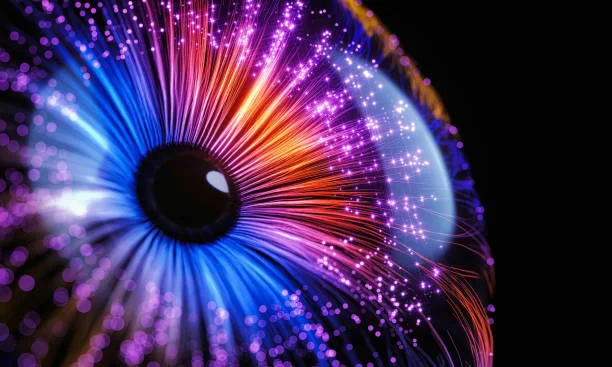Man, digital art is just wild these days. Every time you blink, some new tool pops up, making the whole creative process smarter and—let’s be real—a heck of a lot easier. That whole image-to-3D thing? Total game-changer. I mean, turning a flat pic into a legit 3D model in what, minutes? You used to spend hours messing around with polygons and textures, but now? Click, boom, there’s your model, ready to tweak.
Honestly, if you’re an artist—whether you’re doodling characters for a game, cranking out animation backgrounds, or building virtual worlds—these workflows are basically your new best friend. It’s not just about saving time (though, who’s complaining about that?). It’s about cranking up creative freedom. You get an idea, you test it out in 3D right away, and if it stinks, whatever—toss it and try again. The whole process just feels more… I dunno, natural? Like the tech is finally catching up to the way artists actually think.
There’s so much more to discover—browse our related posts!
Redefining the Creative Process
Man, old-school 3D modeling? Absolute grind. You’d be hunched over your computer for ages, poking at every single vertex, fussing with details, slapping on textures by hand—basically pixel-level micromanagement. You needed a solid combo of creative chops and technical wizardry, or else you’d drown in polygons.
But now? Image to 3D is shaking things up. Forget blank canvases and endless fiddling. You just toss in a sketch, a photo, whatever you’ve got lying around, and the software spits out a rough 3D model before you can even finish your coffee. Suddenly, you’re not stuck wrestling with geometry—you’re actually playing around with ideas. Try stuff out, scrap it, try again. Way less slog, way more experimenting.
Honestly, it’s a game-changer for artists. You can spend your energy on the fun bits—story, vibe, all the cool flourishes—instead of sweating over technical busywork. Feels more like actual creativity, less like punishment by mouse click.
Unlocking Faster Asset Production
Man, speed is everything these days—especially if you’re cranking out content for games, movies, or whatever shiny AR/VR thing is trending. Studios aren’t just asked to make stuff look good; they’ve gotta do it stupid-fast, usually while the clock’s ticking and someone’s breathing down their neck.
Here’s where image-to-3D magic steps in and just bulldozes the old way of working. Instead of spending ages building a model from scratch, an artist can take their 2D sketch, zap it through some wizardry, and—bam!—they’ve got a 3D base mesh in, like, five minutes. No joke. After that, it’s all about the fun bits: sculpting, painting, making the thing actually move. Nobody’s stuck fiddling forever with the boring wireframe part.
Honestly, if you’re in games, film, or anything with a ridiculous asset list, this stuff is a lifesaver. You need mountains of unique models, and you needed them yesterday. Image-to-3D isn’t just a shortcut—it’s pretty much rocket fuel for the whole process.
Enabling Rapid Iteration and Exploration
Honestly, creative work’s messy—nobody nails it on the first try. You churn out version after version before something finally clicks. That’s where image-to-3D tech comes in clutch. You snap a single sketch or pic, tweak a few things, and, bam, out pops a fresh 3D model in no time. It’s wild how fast you can riff on ideas now.
Artists aren’t stuck grinding through the same slow, boring steps either. You can bounce between different looks, weird proportions, or wild concepts without sinking hours into modeling every time. It’s like having a digital playground instead of a production line. Makes it way easier to take creative risks, try stuff that might flop, and, honestly, just have more fun. That freedom? Total game-changer.
Bridging 2D and 3D Skill Sets
Let’s be real—most digital artists start with good old 2D stuff. You know, drawing, painting, maybe some wild concept art that lives in their sketchbooks or Procreate files. Jumping into 3D? Ugh, that’s a whole different animal. All those technical hoops to jump through—blender, sculpting, vertices, blah blah blah. Not exactly a walk in the park.
But these new image-to-3D tools? Total game-changer. You can stick to what you know—just whip up your 2D magic, and boom, the software spits out a 3D model. No need to become some modeling wizard overnight. Just mess with your composition, play with the lighting, worry about the vibes, and let the tech nerds handle the geometry.
It honestly opens doors for a ton of artists who’d never touch 3D otherwise. Now, more people can toss their hat in the ring and actually shape digital worlds, instead of getting gatekept by tricky software. Everyone wins.
Seamless Integration with Modern Tools
Man, digital artists these days are basically tech jugglers. One minute they’re messing around in Photoshop or Procreate, next thing you know, they’re deep-diving into Blender or Unreal Engine like it’s no big deal. And let’s talk about these image-to-3D workflows—they’re finally playing nice with all the big-name apps. No more smashing your head against the wall trying to get files to talk to each other. You just export, tweak, animate, render—bam, done. It actually fits into how people already work, so nobody’s gotta flip their whole process upside down just to try something new.
Doesn’t matter if you’re making animated stuff, piecing together wild game worlds, or just bringing some new weirdo character to life for your next webcomic—these image-to-3D tools are kinda the backbone now. They’re like the opening move in a much bigger creative game.
A Future of Limitless Possibilities
Man, AI’s on a wild ride lately, huh? These image-to-3D tools just keep getting crazier. Soon enough, they won’t just guess the shape of stuff—they’ll pick up on the vibe, the mood, even the way things move, all from a flat piece of art. Like, you’ll draw a sloppy doodle and suddenly the computer’s like, “Oh, you wanted velvet curtains blowing in the wind? Gotcha.”
Honestly, if you’re a digital artist, it’s becoming less about wrestling with software and more about just letting your brain go nuts. The line between dreaming up a concept and actually making it real? Practically vanishing. We’re heading for a future where you barely have to fight the tech—your wildest ideas just… show up. It’s kinda bonkers, but hey, I’m here for it.
Don’t miss out on more great reads—click through our featured posts!






